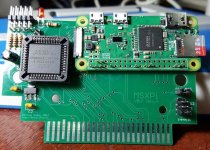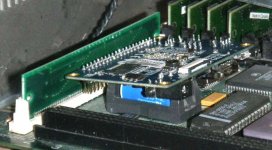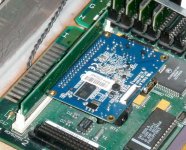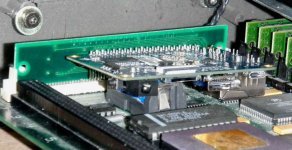Trash80toHP_Mini
NIGHT STALKER
Has anyone looked into SD to ROM SIMM feasibility?
SRAM based - ROM emulator SIMM card (crazy notion comes from having developed DIP SRAM->DIP ROM version of same back in the day)
Battery backup for SRAM = non-volatile ROM emulation
Images on SD loaded into SRAM by onboard NanoComputer (anything suitable to task in a < PiZero kinda deal?)
Infinite (for all practical purposes) ROM images stored on Nano's MicroSD card
WiFi enabled NanoComputer would be controlled remotely from daily driver
Near-instant gratification achieved by uploading freshly downloaded ROM image remotely/immediately and then hitting power key. [ ]
]
Customary over the top bits:
Could load excess addressable ROM space as ROM storage?
HotSwap same?
Ethernet connection to onboard NIC enables files stored on SD to act as mountable networked drives?
Dunno, coffee's kicking in, so I'm losing it.
One internal unit should cost less than a ROM SIMM/Programmer combo?
If more/convenience worth added expense?
No external cases or wire clutter.
Whatcha think? :blink:
SRAM based - ROM emulator SIMM card (crazy notion comes from having developed DIP SRAM->DIP ROM version of same back in the day)
Battery backup for SRAM = non-volatile ROM emulation
Images on SD loaded into SRAM by onboard NanoComputer (anything suitable to task in a < PiZero kinda deal?)
Infinite (for all practical purposes) ROM images stored on Nano's MicroSD card
WiFi enabled NanoComputer would be controlled remotely from daily driver
Near-instant gratification achieved by uploading freshly downloaded ROM image remotely/immediately and then hitting power key. [
Customary over the top bits:
Could load excess addressable ROM space as ROM storage?
HotSwap same?
Ethernet connection to onboard NIC enables files stored on SD to act as mountable networked drives?
Dunno, coffee's kicking in, so I'm losing it.
One internal unit should cost less than a ROM SIMM/Programmer combo?
If more/convenience worth added expense?
No external cases or wire clutter.
Whatcha think? :blink:
Last edited by a moderator:





